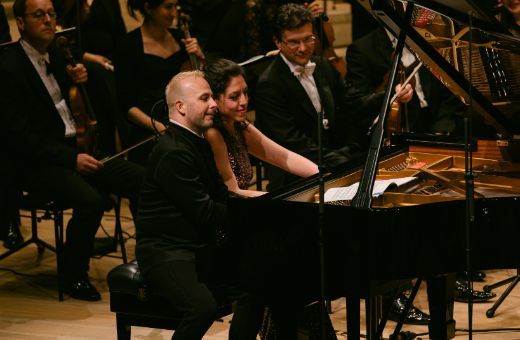Recent lockdowns have given the whole world, not least artists, more than ample time for reflection, introspection and creative inspiration. Step forward Hans Abrahamsen, whose new work Vers le silence was being performed in his presence by the Bavarian Radio Symphony Orchestra, currently on a European tour and in Hamburg as part of that city’s International Music Festival, under Yannick Nézet-Séguin.

Like so much of Abrahamsen’s recent work, this 30-minute piece is thought-provoking and unsettling. It has a number of structurally recurring elements: single strokes of the bass drum representing proportion, division and time itself; powerful eruptions which explode from within a very large orchestra and which then subside; a sense of drifting in and out of consciousness in which the merest whispers of phrases barely register, only to become more recognisably defined before dissipating. Throughout, the fastidiousness of the writing is manifest in the fine instrumental detail: rippling muscular energy from the strings, that launches the second movement; delicate pizzicati from violas followed by soft murmuring from the bassoons, then echoed by clarinets, in the third movement; the gentlest of growls from the trombones, transported from late-Sibelian territory; ethereal sounds from celesta and piano in the Finale. The inventiveness never ceases to fascinate, the music often oscillating, hovering and all but standing still. Much sounds like a perturbing pre-echo of the catastrophe still to come. It was played with commendable commitment by this crack Bavarian ensemble, Nézet-Séguin lavishing palpable care and attention on the vast orchestral tapestry.
This opening work cleverly mirrored the evening’s main work, in which each of the four movements also ends quietly, namely Brahms’ Third Symphony. Nézet-Séguin’s reading was big in contrasts. Some fires smoulder in the outer movements: these were stoked full of fuel. Surges of energy, full-fat string tone, beautifully blended woodwind. So far, so good. It was in the inner movements where I detected a degree of under-characterisation in the slackening of the rhythms and a tendency to linger, but without corresponding lyrical intensity.
Even the artistry and limpid playing of Beatrice Rana couldn’t quite persuade me that Clara Schumann’s Piano Concerto in A minor is a neglected masterpiece. When Clara Wieck began writing it at the tender age of fourteen, she would have had the sounds of Hummel, Weber and Mendelssohn ringing in her ears. Those influences are unmistakeable. It exudes a great deal of charm, reflected in Rana’s captivating realisation, with unrestrained Romantic ardour in several instances of bravura as well as elegant roulades, cascading scales and bel canto flourishes that form a sweet ice-cream-sundae concoction. In essence, sugar hits to the palate that are easily digested.
This concerto was composed backwards. Its Finale, possessed of the rhythm and spirit of a grand polonaise, has the shadow of Chopin stalking through it. This was an original standalone piece, rather like Weber’s Konzertstück in F minor, before the other movements were added. Though the opening movement is melodically somewhat undernourished, it is the central Romanze which raises an intriguing question. Here there is an extended duet for the soloist and principal cellist, in which Rana was magnificently partnered by Giorgi Kharadze. Given the close connections between Clara and Brahms, was this perhaps evidence of the magpie tendency at work, the younger composer borrowing an idea from his older colleague for the slow movement of his own Second Piano Concerto?
At any rate, this link was tenderly underlined in the encore, in which the conductor playing primo and the soloist secondo, both sharing the same piano stool, delivered Brahms’ Waltz in A flat major, Op. 39 no. 15 in perfect harmony.


